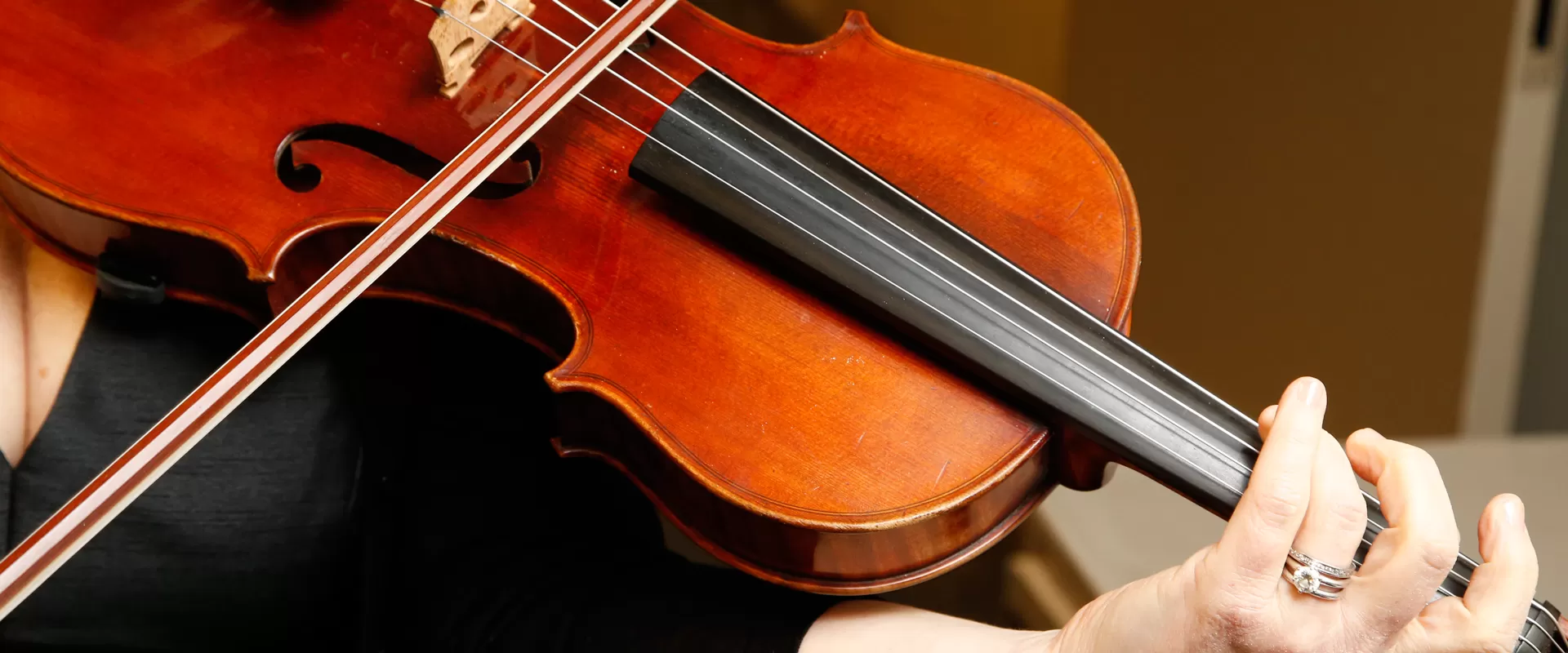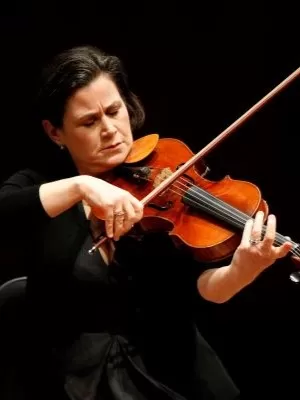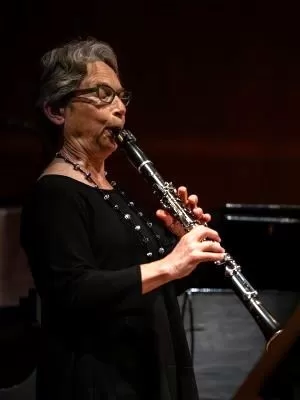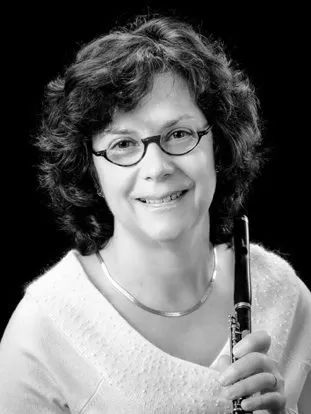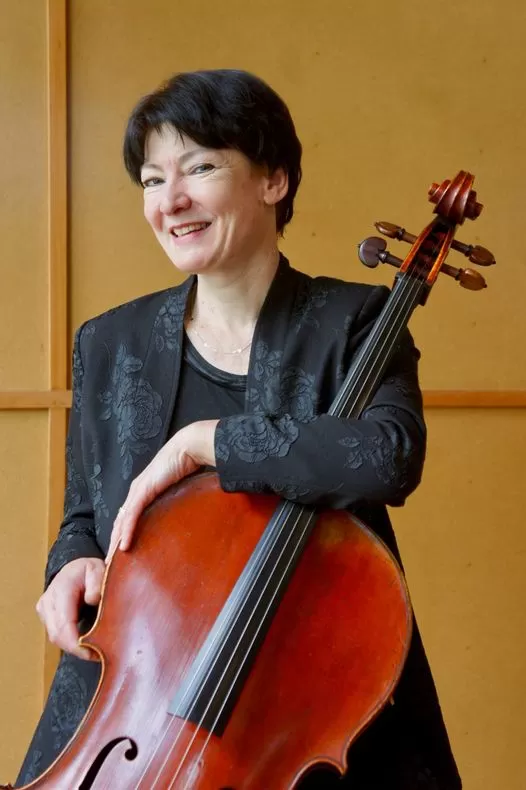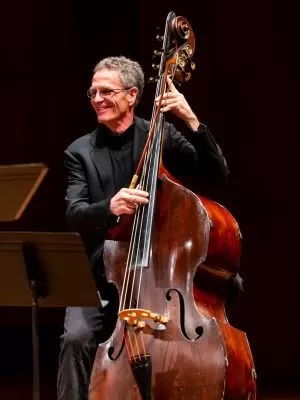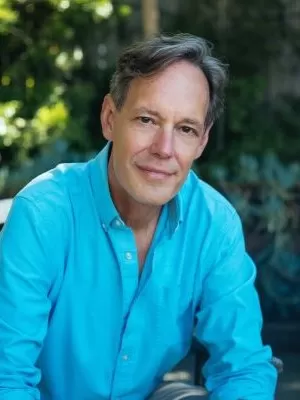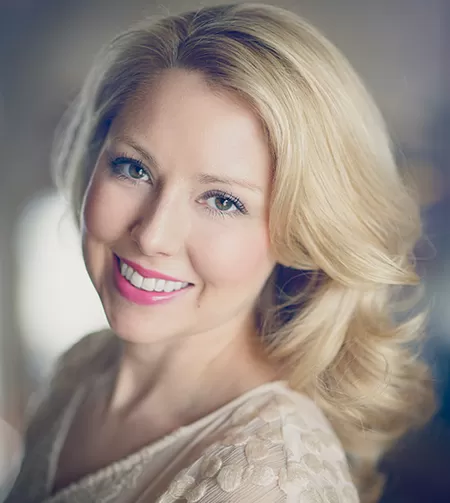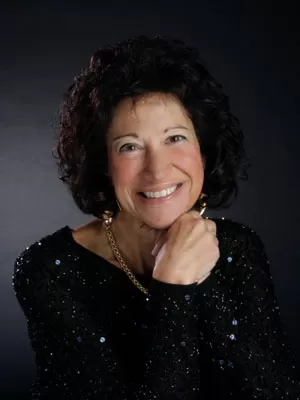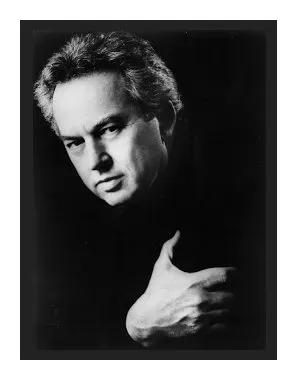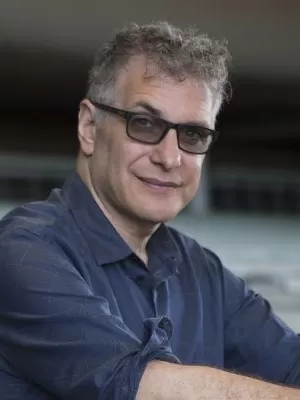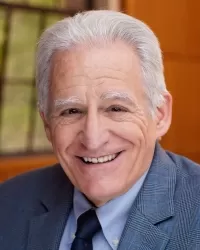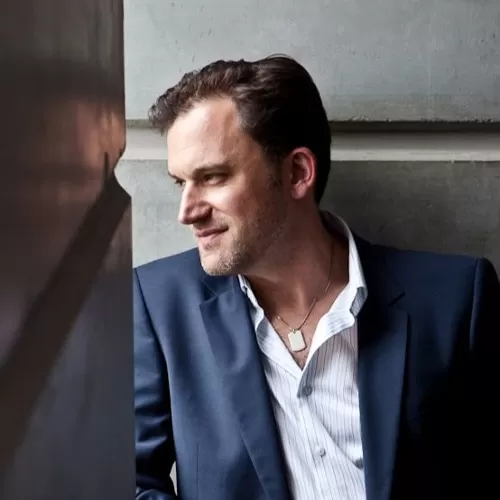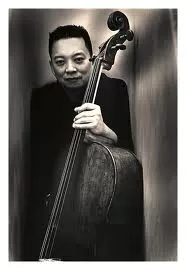May 7, 2007 - 12:00 pm
| Program [ Forbidden! ] | |
|---|---|
| Shemà (1994) | Simon Sargon |
| Maureen McKay, soprano Laura DeLuca, clarinet Zart Dombourian-Eby, flute Mara Finkelstein, cello Mina Miller, piano |
|
| Duo (1925) | Erwin Schulhoff |
| Mikhail Shmidt, violin Amos Yang, cello |
|
| Lullaby and Doina (2001) | Osvaldo Golijov |
| Zart Dombourian-Eby, flute Laura DeLuca, clarinet Mikhail Shmidt, violin Susan Gulkis Assadi, viola Mara Finkelstein, cello Jonathan Green, double bass |
|
| For a Look or a Touch (World Premiere) | Jake Heggie |
| Morgan Smith, baritone Julian Patrick, actor Zart Dombourian-Eby, flute Laura DeLuca, clarinet Mikhail Shmidt, violin Amos Yang, cello Craig Sheppard, piano |
|
Shemà (1988)
Simon Sargon (b. Bombay, India, 1938)
Simon Sargon offers the following remarks:
While reading about the apparent suicide of the Italian author and Holocaust survivor Primo Levi in April 1987, I discovered that he had written a small body of poems in addition to his more extensive prose works. I found the poems musical in their language and rhythm, in addition to being highly personal and deeply felt expressions of his experience. Most of the poems were written within a few months of the liberation of Auschwitz, when the poet returned home to the bleak post-war world.
Four of the five poems which I chose to set in Shemà, are Levi's reaction to the war and its immediate aftermath. The last, "Congedo," dates from 1974, and is more reflective in content. Shemà is the Hebrew word for affirmation of faith in God's unity; it is sung or spoken in every Jewish service. Levi's poem includes a quotation from the biblical prayer associated with shemà. The traditional melody associated with it is used almost universally throughout the Jewish world. I quote this melody in the dramatic first song, suggesting bitonality with imitative entrances of the shemà motive for each instrument. The second song is marked "Andante, with the heavy tread of a funeral march." The col legno of the cello is used to suggest the sound of a death drum, but distorted. Weighted chords in the piano echo this somber conceit throughout, except at the climax, on the words, liberi, sotto il sole ("free, under the sun"), at which point the music lifts beyond death into another realm, perhaps one of hope.
Color and contrast in the music are provided by the two wind instruments. In the third song, for example, both the flute and clarinet evoke the crow's raucous cry. Later they depict its vile and menacing dance over the frozen snow. Another bird section in the final song is also illustrated by the winds. In "Cantare," the lyrical vocal line contrasts with a banal and foolish ditty that the instruments recall from the past. Even though this commonplace tune has a circus-like feel to it, it becomes the vehicle to free the prisoners, psychologically, from their appalling situation in the death camp. Temporarily, at least, they can forget. Throughout the cycle, the musical style is extremely vocal, fully exploiting the coloristic and technical range of the soprano in the lyricism of its lines. Of the five songs, the last is the most operatic in its conception. The poetry recalls an earlier Italy -- before civilization was irrevocably altered by the horrors of the war -- and the music faintly echoes Puccinian strains. My belief is that the text may be construed as a premonition of suicide: Levi's leave-taking of his friends, his means of letting them know that and how he would leave them -- sooner or later.
Paradoxically, the Holocaust was central to Levi's actualization as a person. The choice of "Congedo" as the last song in the cycle underscores the vulnerable, sensitive humanity of Primo Levi the individual, not just Primo Levi the symbol: Survivor of Auschwitz. This dream-like finale, and indeed the entire cycle, are a fitting and eloquent elegy to an unusual man whose poetic message adds a poignant dimension to the ghastliness of the Holocaust.
Duo (1925)
Erwin Schulhoff (b. Prague 1894; d. Wülzburg concentration camp, 1942)
Erwin Schulhoff was an audaciously original voice whose fascinating career was brought to an abrupt end in a Nazi concentration camp. An innovative composer, he saw the performance of his music banned as "degenerate" during the early days of the Reich; as a Jew and a socialist, he was slated for destruction by Nazi hands. Even after the war, Schulhoff's legacy faced non-musical obstacles. In Western Europe, his music was stigmatized because of his communist affiliations; in Eastern Europe, performance of his music was limited by his German-Jewish heritage. Yet during the period between the two world wars Schulhoff was a vital creative force in European artistic life, active both as pianist and composer. The extraordinary variety of his music reflects the period's volatile social and political atmosphere.
Born in Prague, Schulhoff was recognized as a child prodigy by Dvorák. He studied piano and composition at the conservatories of Prague, Vienna, Leipzig and Cologne, and in 1913 took lessons with Debussy. He emerged from a relatively traditional musical education as a free thinker who embraced new currents in both popular and art music. A formidable pianist, Schulhoff championed the music of his time -- Scriabin, Schoenberg, Berg, Webern -- as well as the avant garde quarter-tone piano music of his Czech compatriot Alois Haba. Schulhoff was conscripted into the Austrian army in 1914. He returned four years later disillusioned and angry, and became a committed socialist. In Berlin, he soon became acquainted with the Dadaists, whose absurdist art movement and anti-bourgeois stance resonated with Schulhoff's unconventional ideas and revolutionary spirit. Through his friendship with painter George Grosz, also a collector of contemporary American jazz recordings, Schulhoff became acquainted with this idiom. He worked as a jazz pianist in the "Hot Jazz" clubs of Europe in the 1920s, and was one of the first composers (pre-dating even Gershwin) to incorporate jazz elements.
With the rise of Nazism, Schulhoff's career in Germany ended, despite his artistic triumphs in Berlin, Leipzig and Dresden. He returned to Prague, where he jeopardized his status by becoming a Communist. In 1939 he became a Soviet citizen, and sought to emigrate there following the Nazi takeover of Czechoslovakia that year. Before his visa arrived, he was arrested in Prague as a Jew, a "degenerate artist," and a Soviet citizen-an undesirable on all fronts. Schulhoff's return to Prague in 1923 inspired a new creative period that was marked by a synthesis of avant-gardism with European mainstream tradition.
Czech music, with its roots in native folklore, brought Schulhoff in contact with invigorating musical sources. His great chamber works for strings?the Five Pieces for String Quartet (1923), the two string quartets from 1924 and 1925 and the Sextet for Strings (1924) reflect the influence of Slavonic folksong and the dance music of the day. During this period, Janácek's music became an important model for Schulhoff. His influence is especially evident in the Duo for violin and cello, particularly in the work's lively dance movement Alla zingaresca. Composed in Prague in February 1925, this sparkling, virtuosic work bears the dedication "Master Leos Janácek in deep respect."
Despite his fate, Schulhoff had a unique impact on evolving musical styles during his brief lifetime. His music was highly sensual, and many of his works reflect his fascination with dance. In a letter to Berg in 1921, Schulhoff wrote: "I have a tremendous passion for the fashionable dances and there are times when I go dancing night after night with dance hostesses…purely out of rhythmic enthusiasm and subconscious sensuality; this gives my creative work a phenomenal impulse, because in my consciousness I am incredibly earthly, even bestial…." After a half-century of obscurity, Schulhoff's extraordinary music has struck the eyes and ears of performers and audiences discovering the composers and music once banned by the Nazis as "degenerate." Their efforts shed long-awaited light on a nearly-lost legacy of music between the World Wars.
Lullaby and Doina
Osvaldo Golijov (b. La Plata, Argentina, 1960)
Gypsies were among the racial groups singled out by the Nazis for persecution. The Nazis subjected the Roma, whom they considered racially inferior, to forced labor and massacre, and sent them to extermination camps. Historians estimate that of the approximately one million gypsies living in Europe before the war, up to 220,000 were murdered during the Holocaust.
Golijov offers the following remarks:
This piece starts with a set of variations on a Yiddish lullaby that I composed for Sally Potter's film The Man Who Cried. These variations were designed to work in counterpoint to another important musical theme in the soundtrack, the aria "Je crois entendre encore" from Bizet's Pearl Fishers. In her evocative film, Sally explores the fate of Jews and Gypsies in the tragic mid-years of the twentieth century, through a love story between a young Jewish woman and a young Gypsy man. Accordingly, the theme of the lullaby here metamorphoses into a dense and dark doina (a gypsy slow, rubato genre) featuring the lowest string of the viola. The piece ends in a fast gallop, boasting a theme that I stole from my friends of the wild gypsy band Taraf de Haidouks. The theme is presented in an almost canonical chase where the clarinet pursues the flute-violin combination flying away.
For a Look or a Touch (2007)
Jake Heggie (b. West Palm Beach, Florida, 1961)
Libretto by Gene Scheer
World Premiere: May 7, 2007, Benaroya Hall, Seattle, WA
at Music Of Remembrance's Holocaust Remembrance Concert
Commissioned by Music of Remembrance Mina Miller, Artistic Director
Mina Miller offers the following remarks:
Homosexuality had been considered a crime in Germany since the late 1800s, and Paragraph 175-the pre-Nazi legislation outlawing it-remained in effect until 25 years after the war. The Reich considered homosexuality a symptom of "racial degeneracy," and homosexual prisoners were incarcerated in prisons and concentration camps. Through the rigorous enforcement of Paragraph 175, the Nazis murdered thousands, and shattered the lives of countless others. For many years Music of Remembrance had envisioned commissioning a work which would address this tragedy. Our challenge was to find a composer who could communicate its moral and historical importance, and to do so in a way that would be intimate rather than didactic. When I came to know Jake Heggie's music (Dead Man Walking, The End of the Affair), I knew immediately that we had found the perfect composer for this work. I am so impressed by the emotional honesty of his writing, and by how expressively his music captures complicated human relationships. Jake Heggie has been a wonderful collaborator, and For a Look or a Touch reflects his heart as well as his genius.
Jake Heggie
Jake Heggie offers the following remarks:
Because the persecution of gays during the Holocaust is a topic not much recognized nor discussed, Mina Miller decided to take it on in a powerful and meaningful way: through music. When she called and asked me to create a new chamber music composition on this subject, I was deeply moved -- and hugely challenged. How on earth could we do honor and justice to this subject?
As an opera composer -- a theater man -- I told Mina I'd want to include a singer and find a narrative of some kind. But when I looked for poetry or stories from the era, I was deeply upset to discover a vast silence. Because homosexuality was against the law in Germany until 1970 -- even after the camps were closed, the war over -- gays stayed in hiding or got married, fled or tried to blend in. Not until the late 1970s did the literary and art world break the silence (e.g., Martin Sherman's 1979 play Bent). Even in 2005, when the European Union's Parliament drafted a resolution regarding the Holocaust, any mention of the persecution of gays was removed.
After visiting the U.S. Holocaust Memorial Museum and reading book after book, I came across Robert Epstein and Jeffrey Friedman's extraordinary documentary film, Paragraph 175. It provides testimony from several gay men, survivors of the camps in their 70s, 80s and 90s, telling stories they never thought they'd be able to tell. Surprising, tragic, funny, hateful, shocking stories. Then Mina Miller sent me a link to the journal of Manfred Lewin, a gay Jew murdered at Auschwitz with his entire family. I had all the elements, just not the story. I needed a librettist. I had just worked with the tremendously gifted Gene Scheer -- a songwriter as well as a librettist and lyricist -- on a new song cycle, with plans to write an opera together, so I asked him. I shared the research I'd done with him; he found books I didn't know about. When Gene came across Manfred Lewin's journal, excited by the beauty of Manfred's poetry, he called me right away.
Manfred wrote his journal for his lover Gad Beck, who is still alive today. (One of the storytellers in Paragraph 175, Gad has also written an autobiography.) The two teenagers were lovers in Berlin until Manfred and his family were taken. In their love affair, we found our story: an actor would play Gad in the present day, while the baritone would sing the role of Manfred, appearing one night to Gad as a ghost. Through the two of them, we'd be able to share Manfred's poetry and the stories from Paragraph 175.
Manfred's question, "Do you remember?" established the work's tone. In our story, Gad wants only to forget the horrors he lived through; Manfred's ghost wants only to be remembered, for Gad to treasure their powerful, timeless love. The play between past and present was, musically, filled with rich possibilities. The tune for "Do you remember?" serves as the anchor of the piece; most of the other material in the piece is connected to it. I chose the instruments in the ensemble for a variety of color (so I could include elements of jazz and swing), for a lyrical as well as gritty instrumentation, and for the percussive possibilities of the piano, including using the inside of the piano.
For a Look or a Touch was completed in March of 2007.
